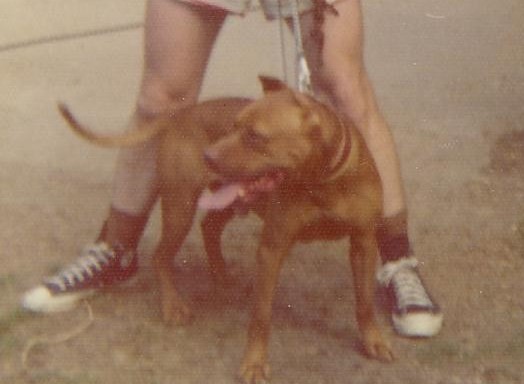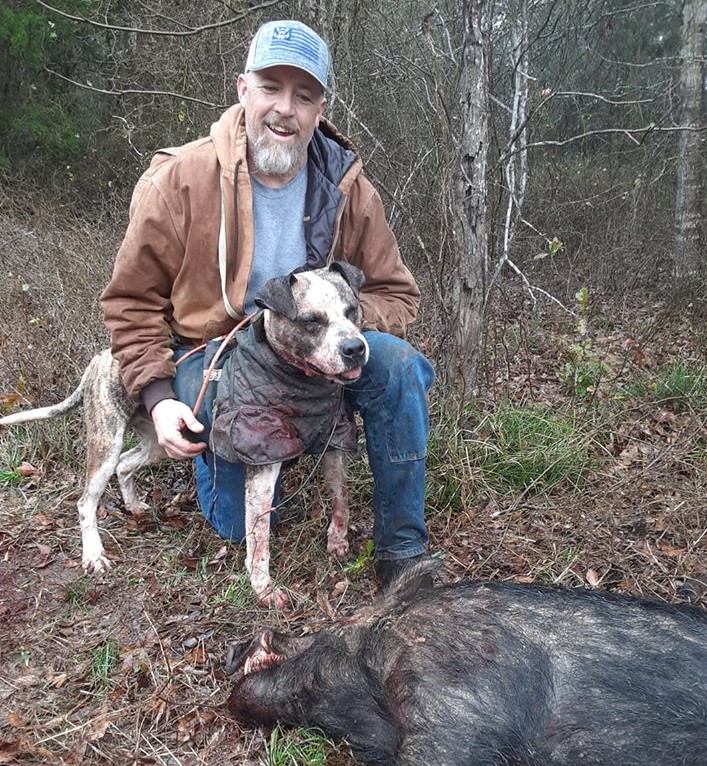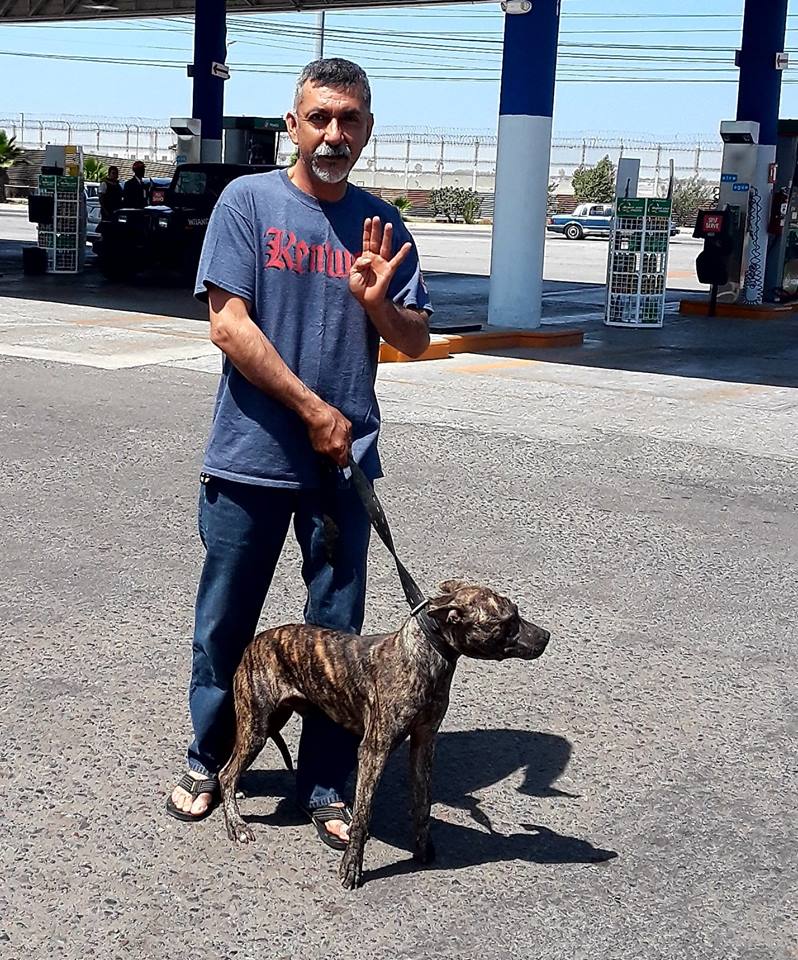Search Posts
Recent Posts
- The Long Goodbye January 18, 2024
- Once More Around the Mulberry Bush January 9, 2024
- The Wash December 28, 2023
- The Truth About Carver Dogs December 1, 2021
- The Question of Pain November 9, 2021
Categories
Subscribe!
Thanks for subscribing! Please check your email for further instructions.
The Sacred Trait
If there is one thing that distinguishes Bulldogs from all other breeds, it is gameness. Deep gameness. It has been around for a long time in our breed. I would say that it is greater in Bulldogs than any other animal. Some people would select gamecocks instead because they fight with steel, and it is not often that one quits. But when they do, they usually run and often fly right out of the pit. Besides, if they were contested by the same rules as the dogs, they would get credited with a lot more “quits.†They don’t have to scratch, for one thing. And they must be “billed†just to be sure they start.
Some people think they have deeper gameness because they are lower on the evolutionary scale, but that idea is born from ignorance of biology and natural selection—or artificial selection, for that matter. Artificial selection is better known as selective breeding. Natural selection occurs over thousands and often millions of years. Selective breeding is speeded up evolution. Unlike natural selection, there is a purpose to selective breeding, at least to some degree. Who knows how our breed got started? Since I have not yet perfected my time machine, our only resource is old writings and artwork to get some idea of what happened.
However, I suspect that our dogs started out as “kill dogs†in the hunt. Or at least, they were the dogs that grasped the prey to slow it down. These dogs were more muscular than the Greyhounds and Spaniels, and they may not have been as fast as the others, but they weren’t far behind. Anyway, they were the boldest of dogs, and they were the ones that would physically engage the prey—irrespective of size and ferocity.
Is it not reasonable to think that these hunters would take a certain pride in these most special of dogs? It is not hard to imagine the hunters discussing which dog was the greatest. With a fair amount of food on hand, I suspect they pondered trying to discover which was the toughest dog. I can even imagine their using a real pit, a real hole in the ground, for an arena. Determining a winner would be obvious to these long-ago hunters. If a dog were disabled or gave up would be likely the most common methods of acknowledging his opponent as the better dog. Maybe the idea came up of drawing scratch lines in the ground for dogs to cross. Who knows? Whatever the beginning, selective breeding, as sloppy as it may have been at times, has worked its magic.





The power of gameness was brought home to me many years ago when I was jogging with Wallace’s Bad Red. Now, Red had worn down teeth, and his heart had been damaged by a heartworm infestation, so his tongue turned black a little just from our run—although he really loved those outings! But he was certainly in no condition to fight. Nevertheless, he was jumped by a large mongrel dog that used to run loose back in the day. With no teeth and no air, he was pretty much helpless. The big dog held him down, and he could do little to counter him, but he would grab a hold some place until he was choked off by his lack of air—but then, he would grab another one! This went on for probably about ten minutes or possibly longer—it seemed like a long time! Then of all things, the big mutt turned away in submission! This was a tough dog that had earned a resentment in the neighborhood for brutalizing their dogs. I didn’t even have to use a breaking stick for getting Red off, as his hold slipped off easily because of his lack teeth and his breathing problem. Red and I proceeded on our run, leaving a whipped dog behind—even though he had suffered almost no physical damage. The dog had simply tired, and he was then intimidated by this dog that was still attacking him without letup even though he was doing almost no damage.
It was probably incidents such as this that made old time dog men think of gameness in near spiritual awe. After all, they were aware of many pit contests in which a more capable dog mopped up the pit with his opponent for nearly an hour, only to have his opponent win because the apparent winner ran out of gameness. But it’s not spiritual. Let me tell you what it is.
But first, let me give just one more example of gameness. I remember seeing a dog being choked out in the pit. He was on his side, and his wagging tail was hitting the pit floor. His owner picked him up nearly unconscious, and gave him just a bit of recuperation, and then the dog scratched like a bullet!
Bob Wallace always treasured his Toney dog almost above all the others because Toney had made a scratch with both shoulders disabled. It was so dramatic that it brought the crowd to its feet and brought tears running down Bob’s cheeks.
Humaniacs have pointed out that dogs can wag their tails when they are under stress. That is true, but that’s not the case with our dogs. They delight in fighting contact—even when they’re taking the brunt of the punishment. Some people think they’re crazy or stupid, but no, it’s just a matter of selective breeding.
Just think of our own joys; they’re all biological. “Free as a bird†is a common expression, and I remember a commentator making the point that they aren’t free at all because they had to consume so much food. But do you know what birds really enjoy? Going after whatever is their food source. The pleasure centers of their brains are activated when they search for food and find it. Of course, breeding time arrives, and the pleasure centers are activated by sexual courting, breeding, nesting, and later by feeding and caring for their chicks. The ones who didn’t do that didn’t survive or leave progeny. So those pleasure centers being activated at the right time served an important service.
In nature, there was always a reason for fighting. In our own species’ case, it was to get resources or to protect them. Even back in prehistoric times, there were reasons for fighting. But in nature, it is important to detect defeat quickly in order to fight another day. So, although the warrior or hero type has always been revered among humans, there are no humans who have anywhere near the gameness of Bulldogs. That’s because humans have always tended to breed to the best fighter, and that nearly always meant that he had superior gameness. That means the pleasure centers of our dogs’ brains are activated when they have fighting contact.
So why do any of them ever quit? I love ice cream, and the pleasure center of my brain is activated when I eat it. However, I can only eat so much of it, and then it doesn’t taste as good. That’s not the best analogy, but I do remember dog men joking about my “curring out†when I couldn’t finish a particular bowl of ice cream that I had wanted so much.
The best dogs, then, are the ones that never lose the pleasure of fighting contact. Even with all the selective breeding over countless generations, those dogs are not common. But they are common enough that a dog must have more than just gameness to win. Even the ones who seem to win just on gameness have other traits that keep them out of trouble or a certain indestructability that enables them to win that way.
I’ll admit that an explanation like this may take the fun and mystery out of that sacred trait—but not for most of us! It’s still the thing that makes Bulldogs special, and it also takes away the humaniacs’ claim that the pit dog game is cruel. The only possible basis for that could be the recovery time, but the dogs seem to withstand that well, too—especially the game ones.
Cruelty charges should be out then. It could be argued that it is wrong to program the dogs to fight each other like that, but that was done long ago. And that would be a different discussion.
I’m not infallible, but I’ve been around the dogs for a long time, and I did teach general science and biology. I’ve been a scholar of the dogs for a long time, too. Nevertheless, this explanation of the sacred trait isn’t carved in stone. But I think it’s a pretty good one.
As usual, a great article..
Nice to see my late catchdog Gus in here.
Well, He looks good!